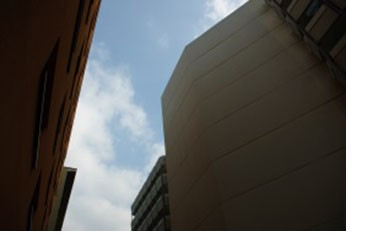 The joint or gap (German: “Fuge”) is the gesture of how two or more objects meet. They may converge and embrace each other, be connected by a third part or interface (i.e. the ornament), or even stand resolutely opposite from each other. Concerning the latter, the void itself becomes the ornament. Produced as feedback from actual (material) objects, the void space is yet defined and perceived. In the realm of architecture, thus, space begins where architecture ends – and it is the space for people which architecture is about. Aiming at a sustainable (i.e. long-term) use of spent energy and matter for buildings, it is the buildings’ openness towards change in use, occupation, and aesthetics that ultimately determine its life span. Creating an adaptable space and reconfigurable construction layers gives way to an open architecture – an architecture of space. To charge the void and to take charge of the void can then be up to the space’s occupants and be adapted to changing demands. Read further
The joint or gap (German: “Fuge”) is the gesture of how two or more objects meet. They may converge and embrace each other, be connected by a third part or interface (i.e. the ornament), or even stand resolutely opposite from each other. Concerning the latter, the void itself becomes the ornament. Produced as feedback from actual (material) objects, the void space is yet defined and perceived. In the realm of architecture, thus, space begins where architecture ends – and it is the space for people which architecture is about. Aiming at a sustainable (i.e. long-term) use of spent energy and matter for buildings, it is the buildings’ openness towards change in use, occupation, and aesthetics that ultimately determine its life span. Creating an adaptable space and reconfigurable construction layers gives way to an open architecture – an architecture of space. To charge the void and to take charge of the void can then be up to the space’s occupants and be adapted to changing demands. Read further

